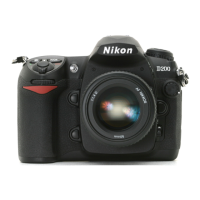✦ Lens thread. Most lenses have a
thread on the front for attaching
filters and other add-ons. Some
also use this thread for attaching a
lens hood (you screw on the filter
first, and then attach the hood to
the screw thread on the front
of the filter).
✦ Limit switch. Lenses with an
extensive focus range (such as this
macro lens) often have a switch
that you can use to limit the range
used by the autofocus system. For
example, if you’re not shooting
close-up pictures, you can set the
lens to seek focus only at more
distant settings, which can save a
bit of time.
✦ Aperture ring. The kit lens, as well
as many other newer lenses, uses
the camera’s electronics exclusively
to set the shooting aperture. These
lenses, which include a G suffix in
their name, have no aperture ring
at all, and are compatible only with
cameras that can set the f-stop
through a control on the camera.
Other lenses maintain compatibility
with earlier cameras by including
an aperture ring and a pair of aper-
ture readouts (the numbers from
f/32 down to f/2.8 in figure 1.7).
The second, outermost readout is
required by some cameras. These
lenses include a D suffix in their
name. Both G- and D-type lenses
work fine with the Nikon D200 dig-
ital camera.
✦ Aperture lock. When using a D-
type lens on the D200, you’ll need
to set the aperture ring to the
smallest f-stop, and then lock it in
that position using the aperture
lock. Set it once and then forget
about it, unless you need to mount
the lens on an older camera or
you’ve mounted the lens on an
accessory such as a bellows or
extension ring.
18 Part I ✦ Using the Nikon D200
Aperture ring
Aperture lock
Depth-of-field indicator
Focus scale
Auto/manual
focus switch
Limit switch
Lens thread
1.7 Key components of a typical D-type lens.
06_037482 ch01.qxp 9/18/06 1:37 PM Page 18

